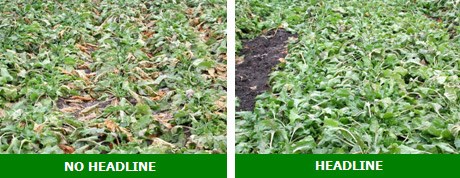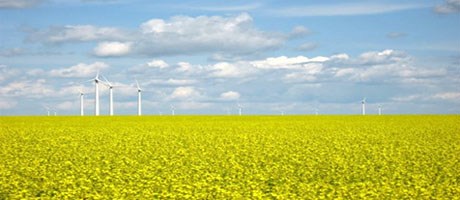557 - Resistant Weeds: Cercospora Demand Attention
Weed resistance has been developing for a long period of time in Minnesota and North Dakota. Resistance to ALS inhibitors was first documented in ND in 1987. The first documented weed resistance in Minnesota was Common Lambsquarters resistance to atrazine in 1982. Unfortunately, Giant Ragweed and Common Waterhemp have now been documented to be resistant to glyphosate in sugarbeet producing counties in southern Minnesota. Common Ragweed has been documented to be resistant to glyphosate in several RRV counties. Common Waterhemp has also been documented to be resistant to glyphosate in the southern RRV. Wild oat resistance in several RRV counties has also been documented to grass herbicides. To preserve use of glyphosate on Roundup Ready® sugarbeets its imperative growers take immediate steps to proactively prevent resistant weed development in all crops in the rotation.
Why is the Documented Resistance to Glyphosate Increasing?
- Roundup Ready crop monoculture on some fields
- Exclusive use of continuous glyphosate for 6-10 consecutive years on some fields
- No herbicide mode of action rotation
- Little or no use of mechanical weed control
- Little or no hand labor use
- No tank mixing herbicide modes of action
- No use of PPI or PRE herbicides in most rotations
Strategies for Resistant Weed Control
- Plant Liberty Link soybeans and use Ignite herbicide
- Plant conventional corn and soybeans and use multiple herbicide modes of action
- Use PPI or PRE herbicides with Roundup Ready soybeans and corn
- Tank mix other herbicide modes of action with glyphosate on Roundup Ready crops
- Maximize use of mechanical weed control, both pre-plant tillage and row crop cultivation
- Use hand labor as necessary - never allow resistant weeds to go to seed
Finish 2011 Cercospora Control with Timely Headline Application
The 2011 growing season had weather that was more suitable for Cercospora than any year in recent memory. For example, the Prosper NDAWN station has had 15 days as of August 8 with SEVERE two day infection values.
Even the St. Thomas and Forest River NDAWN stations have had 6 days of SEVERE ratings. Cercospora was found in all growing areas as of late July. Very good disease management plans have been implemented by most growers. Continue the excellent management plans with a timely Headline application in late August or very early September.

University of Minnesota research has documented reduced frost injury benefits of timely Headline application, see photos. Most growers and agriculturists have also observed these results.
Benefits of Headline Application in Late August or Very Early September Include:
- Very good Cercospora control
- Significantly reduced damage from frost
- Faster recovery from injury after a frost
- Possibly better beet storage

Canola and Sugarbeet Rotations Concerns to Evaluate
- The cost and difficulty of control of volunteer Roundup Ready canola in sugarbeet
- Will nematodes from canola fields damage sugarbeets (NDSU scientists currently have a research project underway to answer this question)
- Cost of production and return per acre versus other crops
- Future availability of nematode resistant varieties
Never let resistant weeds go to seed.
